Welcome
to
our
Annual
Report
Summary
Our vision
Liveable, Thriving and Connected Communities.
He noohanga aahuru, he iwi whai ora, he hapori tuuhono tahi.
Overview
Tirohanga Whaanui
Creating liveable, thriving and connected communities
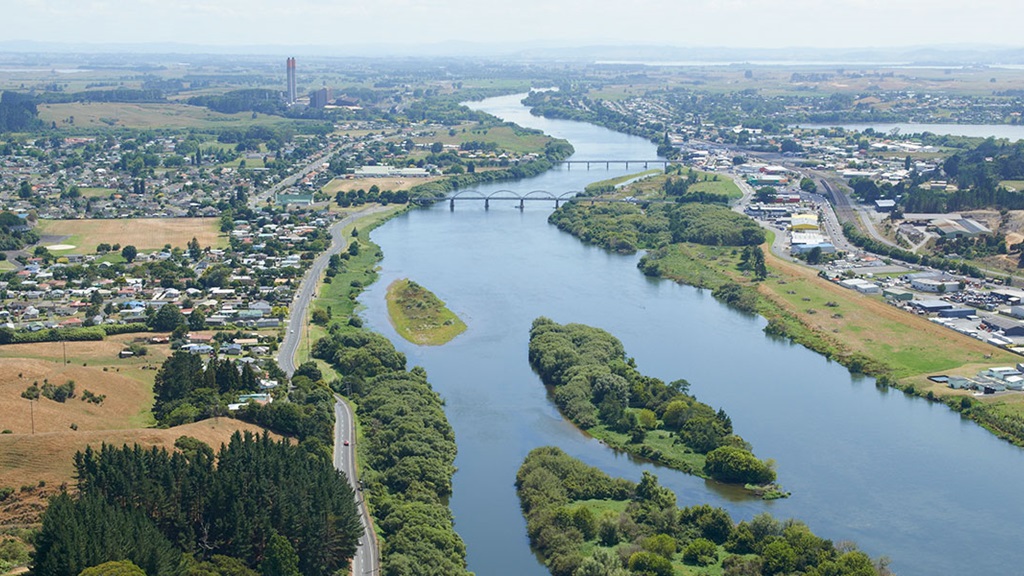
Creating liveable, thriving and connected communities
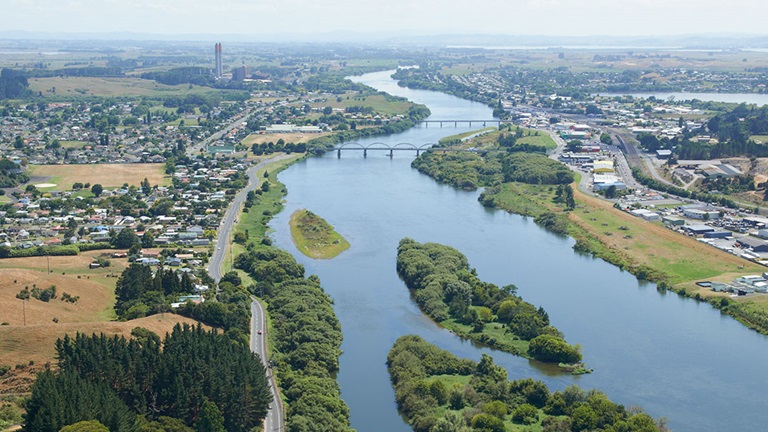
Our vision of ‘liveable, thriving and connected communities - he noohanga aahuru, he iwi whai ora, he hapori tuuhono tahi’, continues to guide how we shape our growth so we create communities that people feel connected to and want to live in.
People-friendly living
We’ve co-developed and adopted the Waikato District Blueprint through a series of community workshops and consultation where we heard from hundreds of members of the public. The Blueprint is Council’s way of showing the community that we are taking a new and different approach to planning by providing a high-level spatial picture of how the district could look in the future, while addressing the social, economic and environmental needs of our people and places. We were given a clear sense of the community’s priorities, what is really important to them, and where they would like to see Council direct its resources. In total, 15 Local Area Blueprints, as well as nine themes and related initiatives, were co-developed for the Blueprint.
Alongside the Blueprint is the work we’re doing on the District Plan. Stage 1 of the Proposed District Plan was publically notified in July 2018 and we received nearly 1,000 submissions on it. The submission period was supported by a series of public drop in sessions throughout the district to provide the public an opportunity to talk about it with our planning team. Hearings for Stage 1 will begin in the next financial year, while Stage 2 of the District Plan is still under review and covers natural hazards and climate change topics.
Financial performance
We worked hard to set rates and debt levels that balance affordability with the need to provide for our growing community. For the 2018/19 year, in the Waikato District average rates per rateable property were $2,881.
Sustainable development
Waikato District Council was once again announced as a finalist in the Society for Ecological Restoration Australasia awards. The awards recognise the continued ecological enhancement of Lake Rotokauri, with the support of external funding.
Economic Development
Our reputation as a place to do business has again increased in the past year.
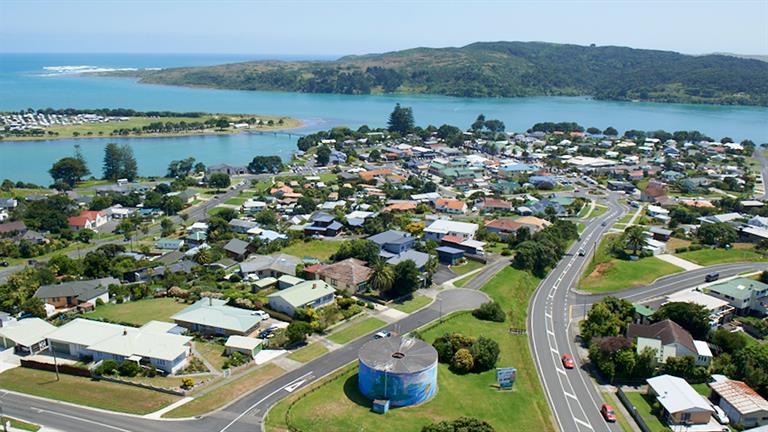
Economic Development
Our reputation as a place to do business has again increased in the past year.

Our International Strategy for Economic Development continues to create relationships with overseas investors, and through the Open Waikato site we have created relationships with China and South Korea, where investors are potentially looking to establish businesses in the district.
We have committed $60,000 per annum as part of the Long Term Plan to the Regional Economic Development Agency, Te Waka and are members of the Regional Economic Development Group.
Working together in partnership
As a democratically-elected Council, our goal is to involve you in the decisions that affect the future of our district.
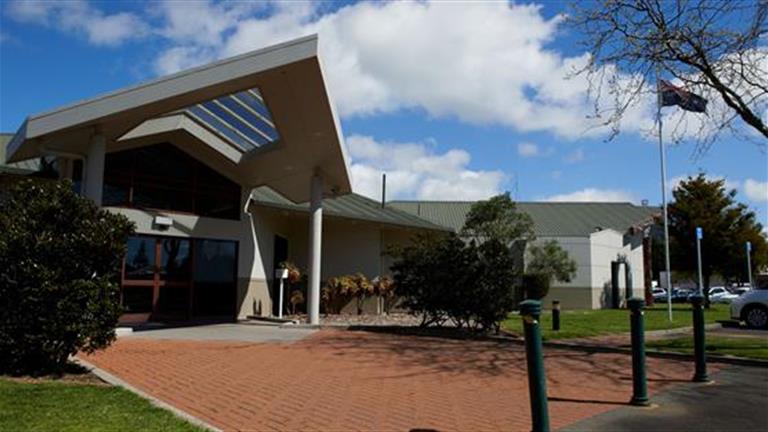
Working together in partnership
As a democratically-elected Council, our goal is to involve you in the decisions that affect the future of our district.

In consultation with the community, we reviewed our representation arrangements for the 2019 local body elections. The Local Government Commission determined that, with some minor boundary changes, our current arrangements provide fair and effective representation.
We expanded our efforts to connect with you using a variety of media, surveys and public meetings, and online services and we are constantly looking for new and better ways to do this. We engaged, consulted and supported our communities on a number of other initiatives, plans, strategies and bylaws ranging from food-waste collection to gambling venues, and from speed limits to libraries.
Building connected communities
We provide many of the facilities and resources that support liveable, thriving and connected communities.
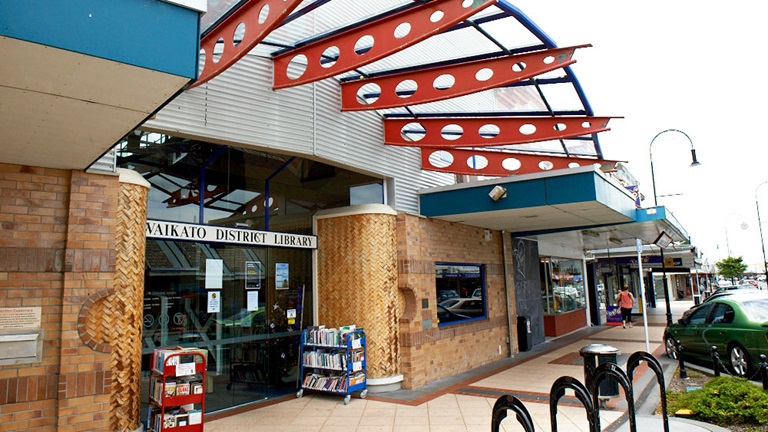
Building connected communities
We provide many of the facilities and resources that support liveable, thriving and connected communities.

Our libraries have continued to be an important place for community activity, hosting community group meetings as well as regular reading programmes and other learning opportunities.
We partnered with Hamilton City Council and are contributing $199,235 plus GST annually for a shared library service. This means nearly 23,000 people living in 8,000 Waikato District households in the southern area of the district continue to be able to use Hamilton City libraries for free. The agreement recognises that our residents and ratepayers live, work, and socialise outside of our district, and that closer collaboration between Hamilton City Council and Waikato District Council is a key factor in ensuring sustainable growth.
To upgrade the Tuakau Library, $1.25 million of funding was made available during 2018/19. We engaged with the community to design what the new space will look like and it is anticipated that buildng work will commence at the end of February 2020, with completion set for end of November 2020. The Meremere library was completed in August 2019, and we’ve started planning for a proposed library/community hub and service centre in Pokeno too.
Waikato District Council have supported a variety of events and projects across the district. The Matariki Fund helped fund events and projects to educate, inform and raise awareness of the practices and traditions of Matariki, both locally and regionally. These included storytelling, exhibitions and educational performances.
Caring for our environment
Our aim is to provide sustainable, attractive, affordable and safe options for living, in a way that’s in tune with what our ratepayers want and need.
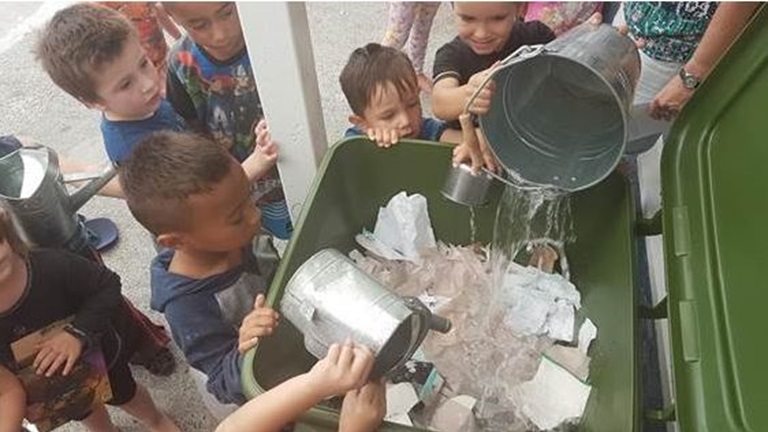
Caring for our environment
Our aim is to provide sustainable, attractive, affordable and safe options for living, in a way that’s in tune with what our ratepayers want and need.

Waste minimisation
Our Waste Management & Minimisation Plan (WMMP) sets out our goals, objectives and targets that help us towards waste avoidance, reduction, and recovery. We know from the waste assessment we carried out between August 2017 and February 2018 that we are generating about 52,000 tonnes of waste to landfill each year, that’s not including farm-waste or waste from the 71,000 tonnes of material we divert through reuse, recycling and composting.
Our Para Kore programme is helping us move towards our waste targets. Central Kids Huntly Kindergarten Hungry Bin worm farm has reduced the kindy’s landfill volume by half since the beginning of the year. We have supported the Enviroschools programme to create a generation who instinctively think sustainably by encouraging young people to plan, design and implement sustainability actions in their own communities.
Students at Whatawhata School have created an edible entranceway to the nature trail, ‘Kuhunga’. The schools front gardens have been developed to provide local produce for school lunches. Tamahere School engaged in ‘Change for Change’ – a programme where each class picked a charity or organisation and identified ways to support them by holding a market day to raise funds and awareness of various charities. This included a school production of ‘The Mauri of Pirongia’ which raised $1,300 to be donated to Pirongia Restoration Society. Tuakau School focused during Term 3 on a Te Awa inquiry which raised students’ awareness of how their actions affect the health of the river and the fish in the river. Horsham Downs and Horotiu schools are connecting with Council through the ‘Water Day’ and planting along the Waikato River.
Environmental Health
Our environmental health service delivery processes were audited by JASANZ (Joint Accreditation System of Australia and New Zealand) in late 2018, and Waikato District Council are now approved as a recognised agency by the Ministry for Primary Industries to provide verification services within the district.
Our natural environment
Funding for local groups
We committed more than $594,000 for distribution to 118 local groups.
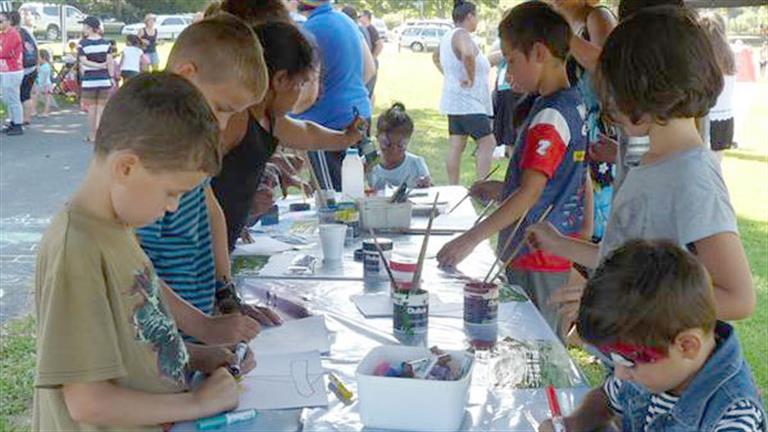
Funding for local groups
We committed more than $594,000 for distribution to 118 local groups.

Of this, the largest single amount was $150,000 to support the work of Hamilton and Waikato Tourism which is already paying dividends in joint research and planning work to underpin our growing tourist industry sector in Raglan.
On behalf of Creative Communities Scheme Fund we distributed $61,927 to benefit 32 local groups; the work of nine more groups benefited from $187,774 we distributed on behalf of an independent trust we administer, the Waikato District Community Wellbeing Trust.
Learning to be ‘DogSmart’
Through our ‘DogSmart’ education programme we’ve scored well above our performance targets for the 2018/19 year.

Learning to be ‘DogSmart’
Through our ‘DogSmart’ education programme we’ve scored well above our performance targets for the 2018/19 year.

The growth of the Dogs in Libraries programme continues, where people are able to read to one of six fully trained and temperament tested dogs. The current programme is being translated into Te Reo so that we can deliver it to our kura kaupapa (te reo speaking schools) in the coming terms.
For the second year we teamed up with Hamilton City Council and hosted our ‘Dirty Dog Challenge’, attracting nearly 300 dogs and their owners to the Christian Youth Camp in Ngaruawahia. Our ‘Pound Pups Pool Parties’ also proved popular, with events organised in Ngaruawahia and Tuakau.
Road and footpath networks growing
A major focus this year has been on planning for changes to the local roading network to support new residential growth and the construction of the Waikato Expressway.
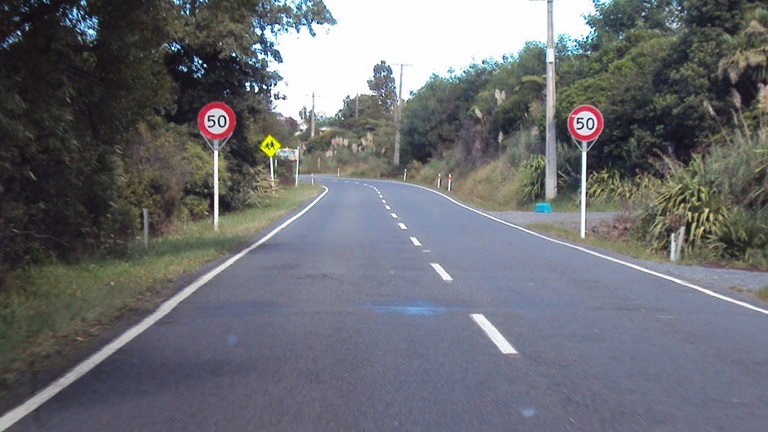
Road and footpath networks growing
A major focus this year has been on planning for changes to the local roading network to support new residential growth and the construction of the Waikato Expressway.

Expressway projects are nearing completion and will bring long term benefits to the district.
NZTA introduced a new framework for assessing speed limits in 2017/18. We have used the new guidelines to assess and make changes to speed limits in our district, completing two years of a three year review programme. In June, the Ministry of Transport announced a change to the Road Safety Strategy. Moving from ‘Safe Systems’ to ‘Vision Zero’, we will be undertaking feedback and assessing the implications on our future programmes in the coming months.
Three Waters
You told us through consultation on our Long Term Plan 2018-28, that your preferred option was to contract Watercare Services Ltd to provide the district’s three waters services under the control of a professional Council-appointed Waters Governance Board.
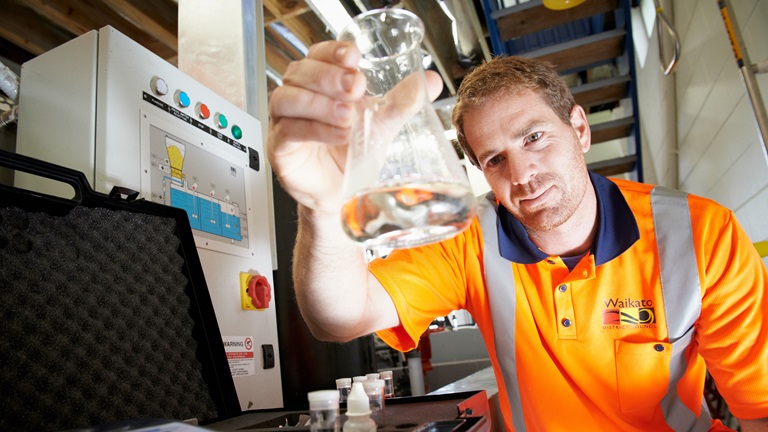
Three Waters
You told us through consultation on our Long Term Plan 2018-28, that your preferred option was to contract Watercare Services Ltd to provide the district’s three waters services under the control of a professional Council-appointed Waters Governance Board.

We invested a significant amount of time over the last year in progressing contract discussions with Watercare that will allow us to meet our LTP 2018-28 commitments The contract with Watercare will allow us to deliver safe drinking water, wastewater and stormwater services with a strong focus on better environmental outcomes.
Water Supply
We’ve now completed a $6.6 million project to improve the security of the Waikato District’s drinking water supply by installing four new reservoirs at Ngaruawahia, Hopuhopu, Huntly and Pokeno. The additional reservoirs have increased Council’s drinking water storage capacity to 9.75 million litres, or, a minimum of 24 hours of water storage across the central area of the district and Pokeno.
Wastewater
We cleaned 13.27 kms of wastewater pipes in Raglan and Huntly and inspected them via Closed Circuit Television (CCTV) cameras, including smoke testing in some areas as part of the third phase of our ongoing inspection and cleaning project. We commenced an inflow and infiltration reduction programme in Meremere to lower the high wet weather flows in the township, and replaced 1.1 km of failing asbestos cement gravity sewer located in Ngaruawahia’s Waikato Esplanade.
We completed studies on servicing growth and wet industries in the Pokeno / Tuakau area and Horotiu Industrial zone, creating a programme of works to upgrade the wastewater network. We also undertook wetland rehabilitation at our Meremere and Te Kauwhata treatment plants, and upgraded and replaced our primary screens at our Raglan and Te Kauwhata treatment plants.
Stormwater
This is Waikato District
We operate...
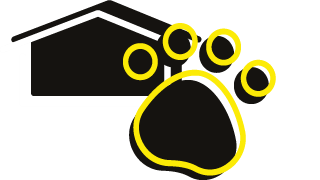
2 animal shelters

6 libraries that service 16,234 library members
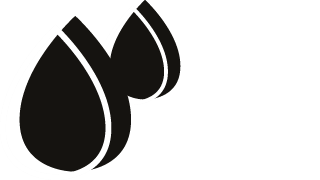
32 water reservoirs with a capacity of 35,117 cubic metres

25 dog exercise areas
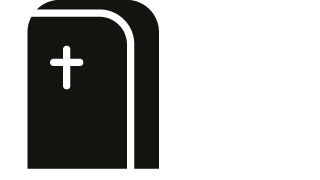
21 cemeteries
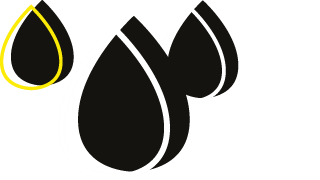
7 water treatment plants with a total capacity of 19,206 cubic meters per day
Waikato spans...
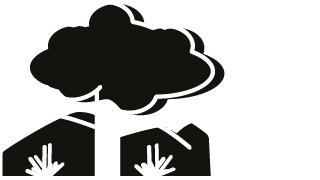
Over 450,000 hectares of land
In 2018/19 we have supported...

151 community groups
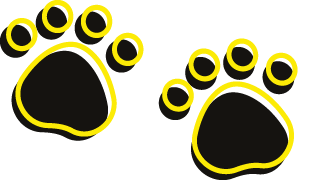
201 dogs were re-homed
Waikato is home to...

73,600 people (24.1% identify as maaori)
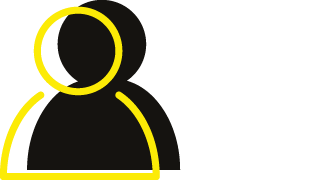
129 new citizens in 2018/19
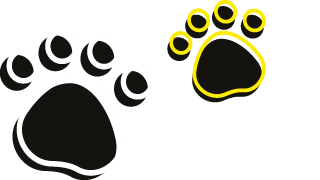
13,451 dogs
We maintain...
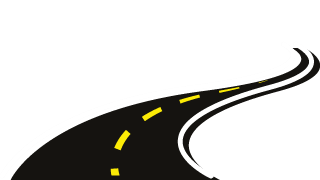
1,864 km of sealed roads
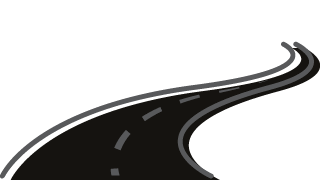
600 km of unsealed roads

113 parks and reserves
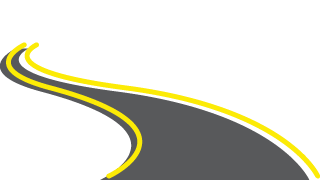
251 km of footpaths
We provide...

9,137,000 litres of drinking water a day

54 public toilets used by 4,000 people every day
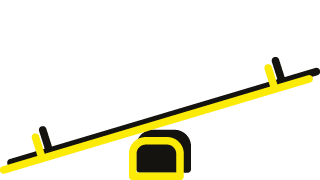
54 playgrounds and neighbourhood reserves
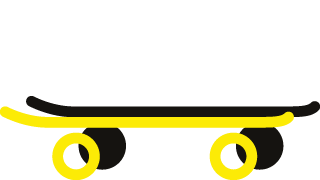
13 skateparks
3 swimming pools
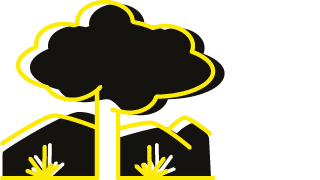
2 campgrounds - Papahua and Hakanoa
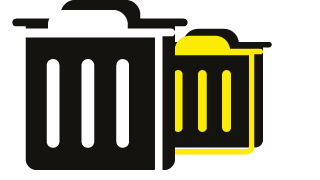
Kerbside collections of 10,438 tonnes of refuse each year
In the past 12 months we have…
Supported our vision of building ‘liveable, thriving and connected communities’ with the creation and adoption of the Waikato Blueprint
Committed more than 594,000 dollars in grants to 118 organisations and charities throughout the district
Received nearly 1,000 submissions on our proposed District Plan
Established an independent Waters Governance Board to drive forward with our strategic and operational changes to the Waikato district’s waters systems and management.
The Waters Governance Board is predicted to save us almost 28.3 million dollars over the next 10 years and deliver improved environmental outcomes
Expanded our online services, attracted nearly 230,000 people to our website and now have almost 11,000 followers on our Council Facebook page
What you got for $1
We deliver a broad range of services to our diverse district of residents, business owners and visitors. Here’s how we spent every $1 we received from general rates.*
Roading
Corporate and council leadership
Resource management
Area offices and other properties
Parks and reserves
Libraries
Grants and donations
Animal control
Environmental health
Solid waste
Wastewater
Water supply
Community and safety
Stormwater
How we did
Our projects and work programmes range across eight groups of activities. For each group of activities we have performance measures that provide us with targets to meet, such as responsiveness, safety, timeliness, meeting statutory requirements and compliance. This graph summarises how we did, where we met expectations and where we need to improve. Please see the full Annual Report on the Waikato District Council website to find out more about the targets and how we performed against them. See the colour coding system below to indicate how well we’ve done.
Performance target results
Governance
We met six of our seven targets in how we make decisions, conduct meetings and consult with iwi. We missed one target because 80% of customers surveyed said they were satisfied with the availability of Councillors, this is compared with a target of 90%.
Governance
Sustainable Communities
This year we consulted and engaged with our community on a number of issues, with 56% of customers satisfied that we are engaging with the community on the right issues, and 53% of customers satisfied with the ease of access to information on key community issues. We surpassed our goal of 95% on delivering the Economic Development strategic work programme, scoring 100% on this target. We achieved 100% on all three of our Emergency Management targets by successfully participating in an exercise fully moderated by an external party, and maintaining a minimum number of trained staff who are capable of fulfilling core Emergency Operations Centre roles.
Customer and partnership focus
Economic Development
Emergency Management
Grants and Donations
Parks and Facilities
Sustainable Environment
We surpassed our solid waste target for the percentage of schools in the district receiving solid waste education, but did not meet our targets for kerbside collection complaint resolutions or rubbish removal service request resolutions. Of the 1,796 building consents we processed this year, 21 were not processed within the 20 working day timeframe meaning we missed one of our Building Quality targets. We also missed one animal control target – the number of reported serious dog attacks on people in public places (where medical attention is required) – but customer satisfaction levels with the service continue to remain high.
Animal Control
Building Quality
Environmental Health
Strategic and district planning
Solid Waste
Roading
The Waikato District Alliance continues to exceed customer service request targets; we attribute this to a strong focus on customer service responses and a greater resourcing. We were unable to measure the targets set in our LTP for the percentage of footpaths in our district that fall within the level of service or service standard for their condition. This is because footpath rating was not included as part of Council’s agreement with our contractor for this financial year. The first rating of footpaths in the district will be carried out in the first quarter of the 2019/20 year.
Roading
Waters Services
As we did last year, we are on target or have met all targets for stormwater and wastewater services. We attribute this to our ongoing programme of network improvements throughout the district. We are still meeting all our customer responsiveness targets.
Stormwater
Wastewater
Water Supply
Financial Statements
Statement of Comprehensive Revenue and Expense
| For the year ended 30 June 2019 | Council | Group | |||
|---|---|---|---|---|---|
| 2018/2019 Actual $,000 | 2018/2019 Budget $,000 | 2017/2018 Actual $,000 | 2018/2019 Actual $,000 | 2017/2018 Actual $,000 | |
| Total revenue | 146,493 | 137,283 | 155,939 | 147,011 | 156,340 |
| Finance costs | (4,316) | (4,267) | (4,113) | (4,316) | (4,113) |
| Operating expenditure excluding finance costs | (151,540) | (121,224) | (113,317) | (151,830) | (113,615) |
| Surplus (deficit) before tax | (9,363) | 11,792 | 38,509 | (9,135) | 38,612 |
| Income tax expense | – | – | – | – | – |
| Surplus (deficit) after tax wholly attributable to Waikato District Council | (9,363) | 11,792 | 38,509 | (9,135) | 38,612 |
| Other comprehensive revenue and expense | |||||
| Gain (loss) on property revaluations | 27,218 | 30,680 | 42,940 | 27,218 | 42,940 |
| Revaluation reserve – landfill | 616 | – | (51) | 616 | (51) |
| Financial assets at fair value through other comprehensive revenue and expense | 1,913 | – | 469 | 1,913 | 469 |
| Total other comprehensive revenue and expense | 29,747 | 30,680 | 43,358 | 29,747 | 43,358 |
| Total comprehensive revenue and expense wholly attributable to Waikato District Council | 20,384 | 42,472 | 81,867 | 20,612 | 81,970 |
Statement of Financial Position
| As at 30 June 2019 | Council | Group | |||
|---|---|---|---|---|---|
| 2018/2019 Actual $,000 | 2018/2019 Budget $,000 | 2017/2018 Actual $,000 | 2018/2019 Actual $,000 | 2017/2018 Actual $,000 | |
| Current assets | 26,082 | 10,447 | 27,863 | 31,267 | 32,759 |
| Non-current assets | 1,853,798 | 1,888,571 | 1,820,940 | 1,853,098 | 1,820,240 |
| Total assets | 1,879,880 | 1,899,018 | 1,848,803 | 1,884,365 | 1,852,999 |
| Current liabilities | 26,264 | 53,382 | 28,288 | 26,369 | 28,332 |
| Non-current liabilities | 92,031 | 94,643 | 79,314 | 92,031 | 79,314 |
| Total liabilities | 118,295 | 148,025 | 107,602 | 118,400 | 107,646 |
| Net assets | 1,761,585 | 1,750,993 | 1,741,201 | 1,765,965 | 1,745,353 |
| Total equity | 1,761,585 | 1,750,993 | 1,741,201 | 1,765,965 | 1,745,353 |
Statement of Changes in Net Assets/Equity
| For the year ended 30 June 2019 | Council | Group | |||
|---|---|---|---|---|---|
| 2018/2019 Actual $,000 | 2018/2019 Budget $,000 | 2017/2018 Actual $,000 | 2018/2019 Actual $,000 | 2017/2018 Actual $,000 | |
| Balance at start of year | |||||
| Accumulated funds including share of joint venture | 1,062,601 | 1,071,311 | 1,029,070 | 1,063,766 | 1,030,204 |
| Reserves | 678,600 | 637,210 | 630,264 | 681,587 | 633,179 |
| Balance at 1 July as previously reported | 1,741,201 | 1,708,521 | 1,659,334 | 1,745,353 | 1,663,383 |
| Total comprehensive revenue and expense for the year wholly attributable to Waikato District Council | 20,384 | 42,472 | 81,867 | 20,612 | 81,970 |
| Other equity movements | – | – | – | – | – |
| Balance at 30 June wholly attributable to Waikato District Council | 1,761,585 | 1,750,993 | 1,741,201 | 1,765,965 | 1,745,353 |
| Represented by equity at the end of the year | |||||
| Accumulated funds | 1,062,038 | 1,114,968 | 1,062,601 | 1,063,353 | 1,063,766 |
| Other reserves | 699,547 | 636,025 | 678,600 | 702,612 | 681,587 |
| Balance at 30 June wholly attributable to Waikato District Council | 1,761,585 | 1,750,993 | 1,741,201 | 1,765,965 | 1,745,353 |
Statement of Cash Flows
| For the year ended 30 June 2019 | Council | Group | |||
|---|---|---|---|---|---|
| 2018/2019 Actual $,000 | 2018/2019 Budget $,000 | 2017/2018 Actual $,000 | 2018/2019 Actual $,000 | 2017/2018 Actual $,000 | |
| Net cash from operating activities | 40,921 | 33,467 | 42,381 | 40,723 | 42,266 |
| Net cash from investing activities | (45,448) | (72,795) | (31,153) | (44,936) | (31,021) |
| Net cash from financing activities | – | 32,031 | – | – | – |
| Net (decrease) increase in cash and cash equivalents | (4,527) | (7,297) | 11,228 | (4,213) | (11,245) |
Summary accounting policies
Waikato District Council is a territorial local authority governed by the Local Government Act 2002 (LGA 2002) and is domiciled and operates in New Zealand.
The Group consists of the ultimate parent Waikato District Council (Council), its 100% owned subsidiary Strada Corporation Limited (Strada) and the Waikato District Community Wellbeing Trust. Strada was previously a 50% party to a Joint Venture Agreement, Waikato Quarries Limited. The Joint Venture Agreement ceased during the 2016/17 financial year. All the companies in which Council has an interest, directly or through Strada, are incorporated and domiciled in New Zealand.
The principal activity of Council is the provision of local infrastructure, local public services and the performance of regulatory functions to the community. Council does not operate to make a financial return.
Council has designated itself and the Group as public benefit entities (PBE’s) for financial reporting purposes.
The full financial statements of Council and the Group have been prepared in accordance with Tier 1 PBE accounting standards, the LGA and the Local Government (Financial Reporting and Prudence) Regulations 2014 (LG(FRP)R) which include the requirement to comply with generally accepted accounting practice in New Zealand (NZ GAAP). These summary financial statements have been prepared in accordance with and comply with Tier 1 PBE accounting standards as they relate to summary financial statements.
The financial statements are presented in New Zealand dollars and all values are rounded to the nearest thousand dollars ($000’s). The summary financial statements of Council and the Group are for the year ended 30 June 2018. The full annual report and summary financial statements were authorised for issue by Council on 8 October 2018.
Summary additional disclosures
Contingencies
Contingent liabilities for Council at balance date are $10,000 (2018: $10,000) The Group’s contingent liabilities at balance date are: $10,000 (2018: $10,000). The contingent liabilities are uncalled capital contributions in Local Authority Shared Services Limited.
Council is a 35 per cent capital beneficiary of the WEL Energy Trust. The life of the Trust ends in 2073 unless terminated earlier if its purpose is completed. Given the uncertainty surrounding the life of the Trust, Council is unable to accurately establish the appropriate value of the 35 per cent share.
Commitments
Council has $27,946,702 (2018: $40,949,110) of capital commitments. Strada had no capital commitments at balance date (2018: $nil).
Events after balance date
Watercare Services Limited was approved on 14 August 2019. This outsourcing arrangement between local authorities falls within Local Government Act 2002 provisions, a direction that was supported through consultation with Waikato District Communities in 2017. The contract sum has initially been set at $213,188,851 for the first five years to 30 June 2024 and is in line with Long Term Plan commitments. The contract does not come into force until 1 October 2019.
For Strada, no material events are expected to occur subsequent to 30 June 2019.
Explanation of major variances
The major variance explanations are set out below and explain the significant differences between actual results for 2018/19 compared to the budget for 2018/19.
Overall revenue was $9.2m greater than budgeted. This difference was largely due to vested and found asset revenue of $5.7m not being budgeted. Contribution revenue was also $4.3m higher than budgeted from growth exceeding budgeted levels throughout the district and in particular for Pokeno.
Overall expenses were $30.4m greater than budget. Asset write-offs mainly occur when infrastructure assets are disposed for no value and these were not budgeted. This year asset write-offs were $30.5m. Majority of this relates to roading assets which were derecognised as it was identified that they belong to the NZTA. Significant write-offs were also recognised on the waters assets due to a rigorous data cleanse in preparation for the Watercare transition. An additional $2.3m above budget was spent on consultants to cover vacancies and staff shortages which also explains the lower amount spent on employee costs compared to budget. Depreciation was $790k lower than budget which is consistent with the large asset write-offs.
The above movements resulted in a deficit of $9.4m at an operating level. (Compared to the budgeted surplus of $11.8m)
Total comprehensive revenue and expense was $20.4m and was $22.1m below budget. Majority of the difference is explained by the operating results noted above. Other comprehensive revenue and expense includes revaluation surpluses which were only $1m lower than budgeted and accounts for the remainder of the variance.
The statement of financial position shows a slight increase in overall net assets of $10.6m compared to budget. The biggest variance was for property, plant and equipment which was lower than budget due to large asset write-offs and a capital programme which was below budget. This difference is off-set by fewer borrowings compared to budget estimates which is consistent with the below budget capital programme. Current assets are higher than budgeted and is largely due to cash flow timing differences which resulted in a higher cash and cash equivalents balance compared to budget.
- The cash flow statement highlights how the capital programme was below budget and is offset by no new borrowings this year.
Disclaimer
The specific disclosures included in this summary annual report have been extracted from the full annual report which was authorised for issue on 7 October 2019.
The summary cannot be expected to provide a complete understanding as provided by the full annual report of the financial and service performance, financial position and cash flows of Waikato District Council.
The summary has been examined for consistency with the full annual report and was audited by Audit New Zealand on behalf of the Auditor General. The full annual report and summary received an unmodified audit opinion on 7 October 2019.
The full annual report can be obtained from any of the Council’s offices or can be accessed online at https://www.waikatodc.govt.nz.
Independent auditor's report

Independent Auditor's Report
To the readers of Waikato District Council and group’s summary of the annual report for the year ended 30 June 2019.
The summary of the annual report was derived from the annual report of the Waikato District Council and group (the District Council) for the year ended 30 June 2019.
The summary of the annual report comprises the following summary statements on pages 3 to 6 and 8 to 12:
- the summary statement of financial position as at 30 June 2019;
- the summaries of the statement of comprehensive revenue and expense, statement of changes in net assets/equity and statement of cash flows for the year ended 30 June 2019;
- the notes to the summary financial statements that include accounting policies and other explanatory information; and
- the summary statement of service provision.
Opinion
In our opinion:
- the summary of the annual report represents, fairly and consistently, the information regarding the major matters dealt with in the annual report; and
- the summary statements comply with PBE FRS 43: Summary Financial Statements.
Summary of the annual report
The summary of the annual report does not contain all the disclosures required by generally accepted accounting practice in New Zealand. Reading the summary of the annual report and the auditor’s report thereon, therefore, is not a substitute for reading the full annual report and the auditor’s report thereon.
The full annual report and our audit report thereon
We expressed an unmodified audit opinion on the information we audited in the full annual report for the year ended 30 June 2019 in our auditor’s report dated 7 October 2019.
Council’s responsibility for the summary of the annual report
The Council is responsible for preparing the summary of the annual report which includes preparing summary statements, in accordance with PBE FRS 43: Summary Financial Statements.
Auditor’s responsibility
Our responsibility is to express an opinion on whether the summary of the annual report represents, fairly and consistently, the information regarding the major matters dealt with in the full annual report and whether the summary statements comply with PBE FRS 43: Summary Financial Statements.
Our opinion on the summary of the annual report is based on our procedures, which were carried out in accordance with the Auditor-General’s Auditing Standards, which incorporate the Professional and Ethical Standards and the International Standards on Auditing (New Zealand) issued by the New Zealand Auditing and Assurance Standards Board.
As well as our audit of Waikato District Council and Group's annual financial statements and performance information, we have performed a limited assurance engagement related to the District Council's debenture trust deed and performed a review of selected procurements, probity review and ad-hoc support, which are compatible with those independence requirements. Other than these engagements, we have no relationship with or interests in the District Council or its subsidiaries and controlled entities.
Leon Pieterse,
Audit New Zealand
On behalf of the Auditor-General
Tauranga, New Zealand
